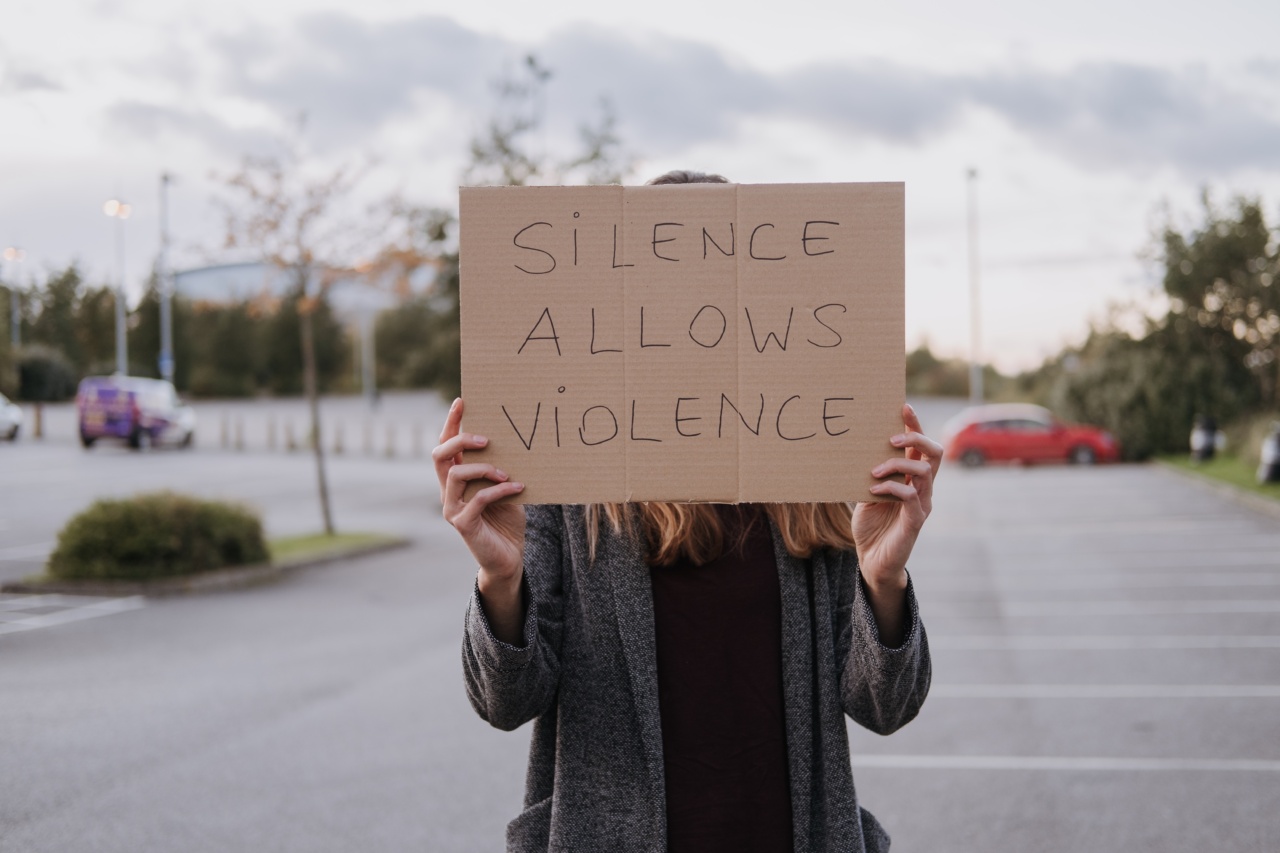Violence against women is a pervasive and widespread issue that affects millions of women across the world.
It takes many forms, including physical, sexual, and psychological violence, and can occur in various settings, such as homes, workplaces, and public spaces. This article aims to shed light on the importance of stopping violence against women, the contributing factors, and the potential solutions to this pressing problem.
The Extent of the Problem
Violence against women transcends geographic boundaries, socioeconomic status, and cultural differences.
According to the World Health Organization (WHO), approximately 1 in 3 women worldwide have experienced physical and/or sexual violence in their lifetime. These alarming statistics paint a grim picture of the magnitude of the problem.
Types of Violence Against Women
There are various forms of violence that women face on a daily basis:.
1. Domestic Violence
Domestic violence, also known as intimate partner violence, occurs within a domestic or familial relationship. It includes physical abuse, emotional or psychological trauma, sexual assault, and economic coercion.
This form of violence affects women of all ages and backgrounds, trapping them in a cycle of fear and dependency.
2. Sexual Violence
Sexual violence involves non-consensual acts of a sexual nature, including rape, sexual assault, and harassment. It is a violation of a woman’s autonomy and dignity, leaving lasting physical and psychological scars.
Perpetrators of sexual violence often go unpunished, perpetuating a culture of impunity.
3. Workplace Violence
Women are often subjected to violence and harassment in their workplace, ranging from verbal abuse to sexual harassment.
This not only affects their professional growth but also contributes to a hostile work environment, hindering their overall well-being.
4. Human Trafficking
Human trafficking is a form of modern-day slavery, where women and girls are trafficked for various exploitative purposes, such as forced labor, sexual exploitation, or forced marriage.
This heinous crime continues to thrive due to the demand for cheap labor and the objectification of women.
Causes and Contributing Factors
Violence against women is not a result of individual actions but is deeply rooted in structural inequalities and harmful gender norms. Some of the contributing factors include:.
1. Patriarchal Society
Patriarchal norms perpetuate the notion of male dominance and control over women. This power imbalance creates an environment where violence against women is tolerated or normalized.
2. Lack of Education
Education plays a crucial role in challenging societal norms and reducing violence against women. However, in many parts of the world, women are denied access to education, limiting their opportunities for empowerment and independence.
3. Economic Dependence
Women who are economically dependent on their partners or families often face higher risks of violence. Financial independence enables women to escape abusive situations, but unequal economic opportunities disadvantage many women.
4. Weak Legal Systems
Inadequate laws, limited enforcement, and societal attitudes that blame victims discourage women from reporting violence. This lack of effective legal measures perpetuates a culture of silence and impunity.
Consequences of Violence Against Women
Violence against women has far-reaching consequences on both an individual and societal level:.
1. Physical and Psychological Health
Women who experience violence often suffer from physical injuries, chronic pain, and mental health issues, such as depression, anxiety, and post-traumatic stress disorder (PTSD). These traumas can have long-lasting effects on their overall well-being.
2. Inter-generational Cycle of Violence
Children who witness or experience violence at home are more likely to become perpetrators or victims of violence themselves in the future. This perpetuates a vicious cycle that affects future generations.
3. Economic Consequences
Violence against women hampers their economic participation and productivity. It leads to missed opportunities for education and employment and reduces their overall financial independence.
Preventing and Addressing Violence Against Women
Stopping violence against women requires a multi-faceted approach involving individuals, communities, governments, and organizations:.
1. Education and Awareness
Raising awareness about the causes and consequences of violence against women is crucial in challenging societal norms and attitudes.
Comprehensive and age-appropriate education on gender equality and respectful relationships should be integrated into school curricula.
2. Legal Reforms
Strengthening laws against violence, ensuring their effective implementation, and addressing legal loopholes are critical steps towards ending impunity.
Specialized courts and support services can be established to provide survivors with a safe space for justice.
3. Support Services
Providing accessible and confidential support services such as helplines, shelters, counseling, and medical assistance can play a crucial role in empowering survivors and facilitating their recovery.
4. Engaging Men and Boys
The involvement of men and boys in efforts to end violence against women is essential. Promoting healthy masculinity, encouraging respectful relationships, and challenging harmful gender stereotypes can contribute to long-term behavioral change.
Conclusion
Violence against women is a violation of human rights and a barrier to gender equality. It is a complex issue deeply ingrained in societal structures and norms.
By addressing the causes and consequences, promoting gender equality, and ensuring the empowerment of women, we can create a world free from violence and discrimination.





























